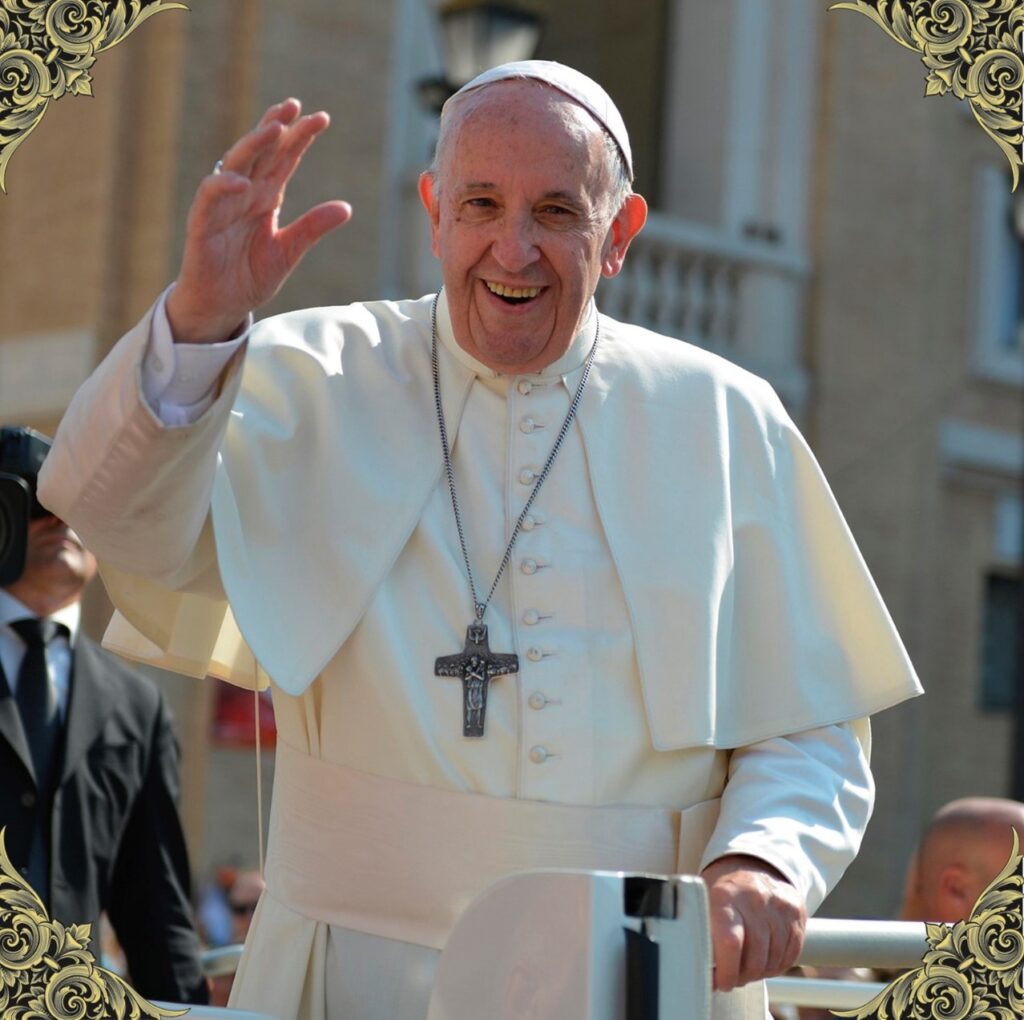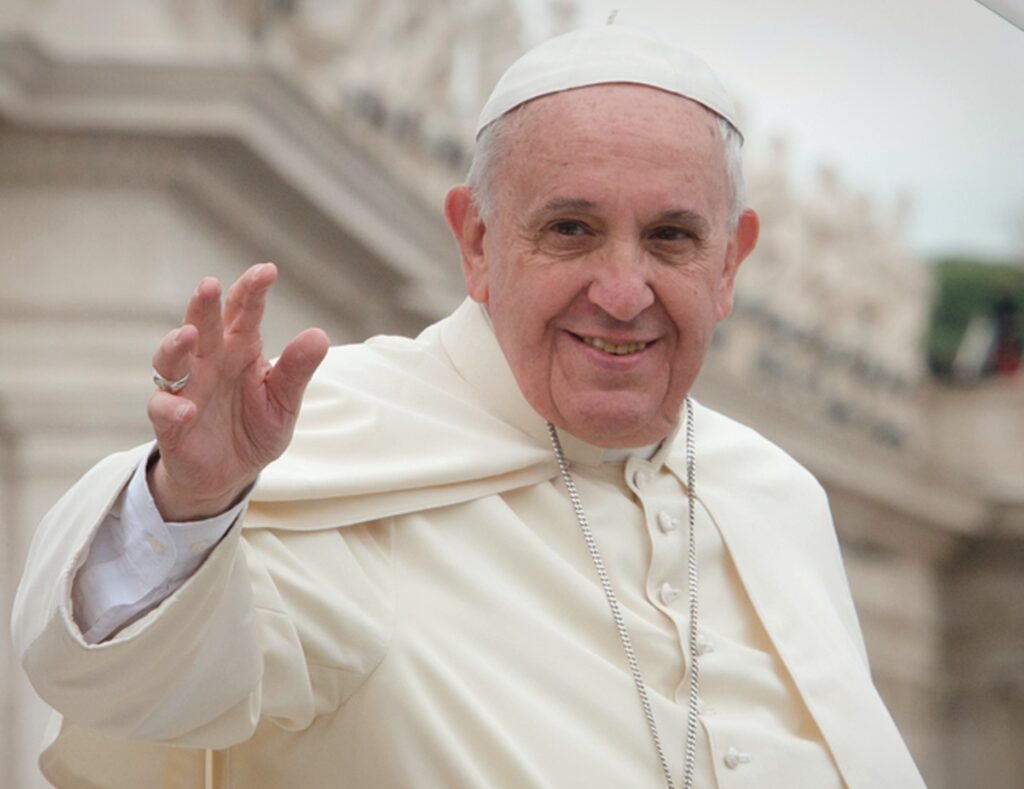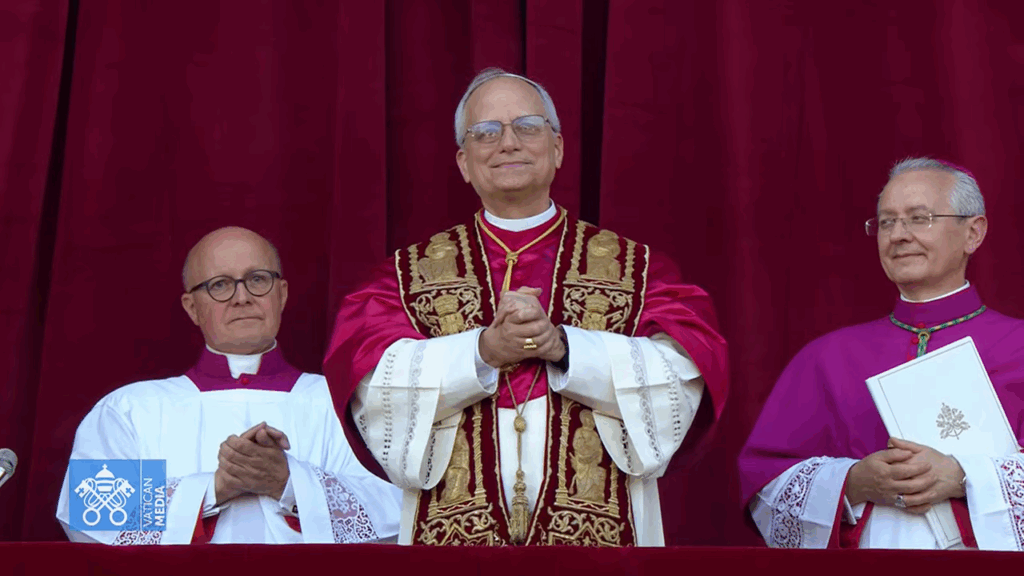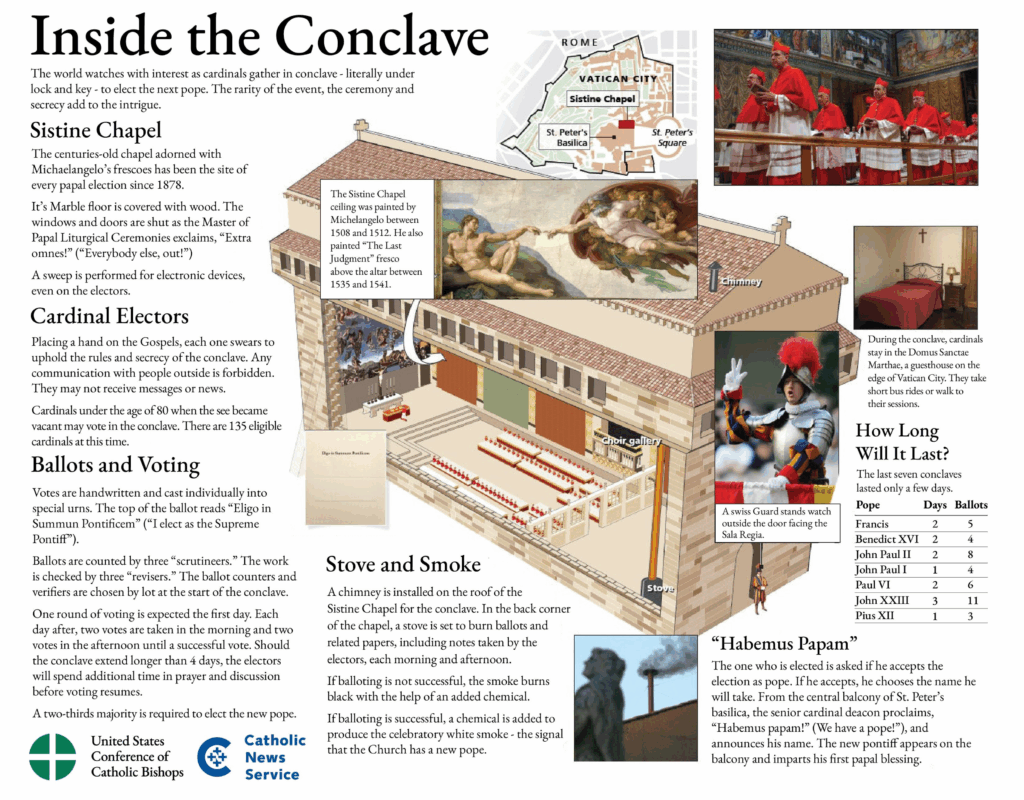Pope Francis
Remembering Pope Francis

On March 13, 2013, Cardinal Jorge Mario Bergoglio, 76, archbishop of Buenos Aires, was elected in the conclave to become the first pope from the Americas. As the 265th successor to Saint Peter, he was the first pope to take the name of Francis, a name chosen in honor of Saint Francis of Assisi because he wanted “a church which is bruised, hurting and dirty because it has been out on the streets, rather than a church which is unhealthy from being confined and from clinging to its own security.”
Source: USCCB
To read his full biography, please visit the Vatican website.
Pope Francis passed away on the Monday of the Octave of Easter, April 21, 2025, at 7:20 am (Vatican Time). The cause of Pope Francis’ death has been identified as a stroke, followed by a coma and irreversible cardiocirculatory collapse.
Dr. Andrea Arcangeli, Director of the Directorate of Health and Hygiene of the Vatican City State, issued the official certification, and the Holy See Press Office released the report on Monday evening.
According to the medical report, the Pope had a prior history of acute respiratory failure caused by multimicrobial bilateral pneumonia, multiple bronchiectases, high blood pressure, and Type II diabetes.
Pope Francis’ funeral is set for Saturday, April 26, 2025.
Source: VaticanNews.com
Pope Francis’ Funeral Mass – Saturday, April 26, 2025


For more information, please click the links below
- Statement on the Death of Pope Francis from the Florida Conference of Catholic Bishops
- Letter from Bishop John Noonan
- Pope Francis Biographic Timeline
- Liturgical Notes and Musical Resources for Use Upon the Death of Pope Francis
O God, faithful rewarder of souls,
grant that your departed servant Pope Francis,
whom you made successor of Peter
and shepherd of your Church,
may happily enjoy for ever in your presence in heaven
the mysteries of your grace and compassion,
which he faithfully ministered on earth.
Through our Lord Jesus Christ, your Son,
who lives and reigns with you in the unity of the Holy Spirit,
God, for ever and ever.

God bless our new Holy Father, Pope Leo XIV
Cardinal Robert Francis Prevost, a native of Chicago, USA, is our new Pope.
CLICK HERE for more details.
What happens next?
As the world continues to mourn the late Pope Francis during the nine-day period known as “Novendiales” (also rendered “Novemdiales”), preparations are underway for the highly-regulated conclave process, which is how a new pope is elected for the Church. The Conclave to elect a new Pope is scheduled to begin on Wednesday, May 7, 2025.
What is the Conclave?
The task of electing the new pope falls solely upon the members of the College of Cardinals who are younger than age 80 and otherwise eligible or able to participate, of which there are currently 134.
Cardinal Giovanni Battista Re, 91, is the current dean of the College of Cardinals, i.e., the most senior member, elected from among the ranks of the cardinal bishops and confirmed by the pope. Normally, it would be Re’s job to move the conclave process forward once it gets underway.
Re is too old to take part in the conclave, however, as is his vice dean, Cardinal Leonardo Sandri. So the upcoming conclave will be directed by Cardinal Pietro Parolin, the next eligible most senior cardinal bishop and the Vatican’s secretary of state.
The conclave system was formalized in 1274, and its procedures are spelled out in great detail in the 1996 apostolic constitution Universi Dominici Gregis of Pope John Paul II, which was amended slightly by Pope Benedict XVI and Pope Francis.
Normally, the day on which the conclave begins is to be the 15th day after the death of a pope, the 16th day of the interregnum (which just means the period between popes). It can begin up to the 20th day “for serious reasons,” or earlier than the 15th day if all the cardinals are present.
The Holy See Press Office announced Monday that the conclave will begin on the morning of May 7, with the Holy Mass for the Election of the Roman Pontiff in St. Peter’s Basilica.
That afternoon, the cardinals — only the electors — will make their entrance into the Sistine Chapel, chanting the “Veni Creator Spiritus,” invoking the Holy Spirit’s guidance. Once inside, each cardinal will take an oath to observe the procedures, maintain secrecy, and vote freely for the candidate he believes most worthy.
When the last of the cardinal electors has taken the oath, the master of papal liturgical celebrations, Archbishop Diego Ravelli, will give the order “Extra omnes” (“Everyone out”), indicating that all those not taking part in the conclave must leave the Sistine Chapel.
Source: Catholic News Agency
Other sources:


